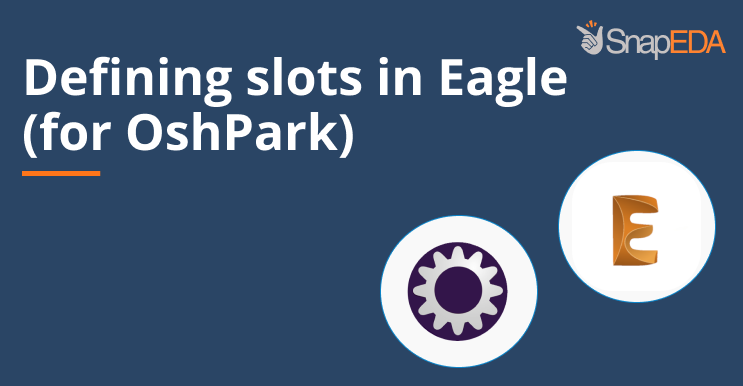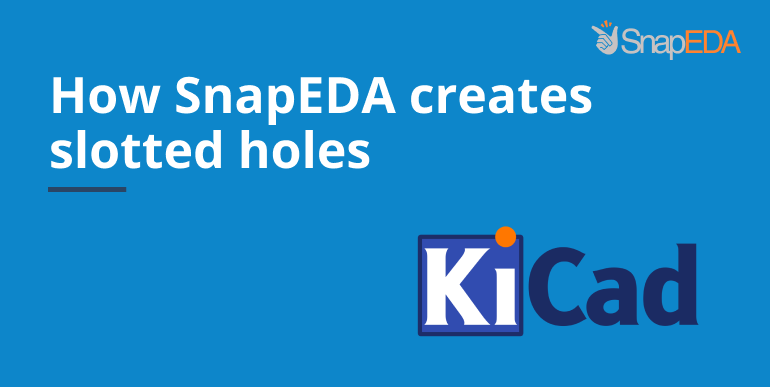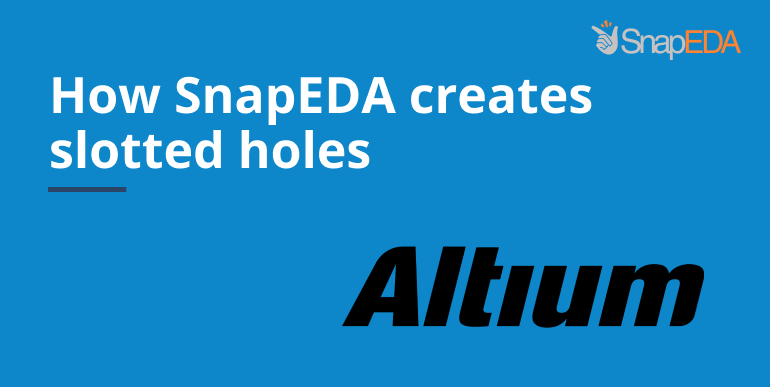The operational amplifier – or “op amp” for short – is a common building block in analog electronics. Whether you’re a professional electronics designer or just getting started, it is likely you’ve used an op amp in your designs. Invented in 1941 by Karl D. Swartzel Jr. of Bell Labs, the op amp was originally…
-

How to define cutouts and slotted holes in Eagle (for OshPark users)
Read moreAlthough it’s one of the most popular PCB design tools, Eagle doesn’t have a native way of defining plated slots. Luckily, there are methods of getting fully supported slots in Eagle! SnapEDA follows Eagle’s official method when defining slotted holes. This method is ideal for 2 layer boards. Please note though that if your board has…
-

How Bluetooth got its name, an interview with Jim Kardach
Read moreToday, Bluetooth is the primary driver of wireless connectivity between electronic devices. But like most new technologies, there were plenty of challenges throughout its development and commercialization. We spoke to Jim Kardach, the founding chairman of the Bluetooth Special Interest Group (SIG), which created the technology, to understand why it succeeded where so many similar…
-

How to customize your schematic symbols for KiCad
Read moreThe SnapEDA team is thrilled to announce a new way for KiCad users to customize their schematic symbols! Traditionally, SnapEDA offered one style of schematic symbols for KiCad which overlapped functionally identical symbols pins, despite them having different footprint pins. We initially chose this approach due to early feedback from KiCad users who said it made…
-

How does SnapEDA handle slotted holes?
Read moreOne of the most common questions we are asked is how we handle slotted holes in various PCB design tools. Because each tool handles slotted holes differently, we’ve created guides for each format so you can learn how to properly import the slotted holes, how they’re represented, and how to properly communicate the presence of…
-

How SnapEDA creates slotted holes in Eagle
Read moreQ: How does SnapEDA generate slotted holes in Eagle? A: Although there is no tool to directly create slotted holes in Eagle, there is an official method to recommended by Eagle. In 2018, SnapEDA adopted this method of creating slotted holes. As described in the article, SnapEDA parts have slots represented on Layer 46 (Milling…
-

FAQ: How does SnapEDA create slotted holes in Orcad & Allegro
Read moreQ: The footprint I downloaded should have slotted holes in Allegro – why aren’t they appearing? A: SnapEDA defines slotted holes for Allegro footprints using the layer Board Geometry > Ncroute-Path. Q: How can I ensure that my PCB fabricator accurately makes the slots? A: When sending your design to manufacturing, provide the NC Route…
-

FAQ: How does SnapEDA create slotted holes in KiCad?
Read moreUpdate: SnapEDA now supports native slotted holes in KiCad! Important Note: Instructions below are outdated, unless you’re using an older version of KiCad (pre-V4) or in cases of irregular slots for square/round pads, where the hole measures greater than the pad shape. —————————————————————————————————————– Q: How does SnapEDA define slotted holes in KiCad? A: Our current…
-

FAQ: How does SnapEDA create slotted holes in Altium?
Read moreUpdate: SnapEDA now supports native slotted holes in Altium! Learn more here. The article below is now outdated, but if you have the former .lia files, please refer below. ———————————————————————————————————– Q: Why does the slotted hole in the footprint I downloaded appear round? A: Due to a limitation of the Altium file format supported on…
-

The Top 10 D-Sub Connectors
Read moreD-Sub connectors, also known as D-subminiature or DB connectors, are electrical connectors commonly used in communications. They consist of two or more parallel rows of pins (in male connectors) or holes (in female connectors). The name D-Sub comes from their characteristic D-shaped metal shield, which has two important functions: it provides mechanical strength and ensures…

